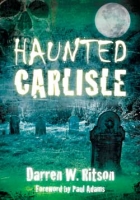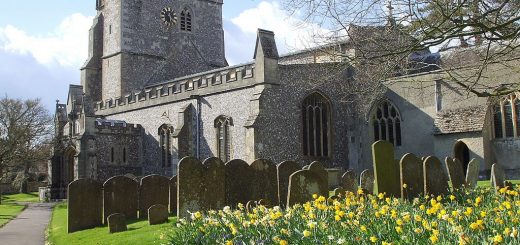Battle Abbey
On 14 October 1066 the Battle of Hastings took place. The Saxon King Harold II, defending Britain with 7500 infantry engaged the invading Norman army of William Duke of Normandy. William had mustered a fleet of 700 ships to bring his 2200 cavalry, 1700 archers and 4500 infantry across the English Channel from Northern France. The battle took place at Senlac Hill which is roughly 6 miles from Hastings itself. William defeated the Saxon army even though they held the higher ground and during the fighting King Harold was killed. The Bayeux Tapestry shows the events leading up to and during the battle, showing what could be Harold being shot in the eye with an arrow.
![Operarius [CC BY-SA 3.0 de (https://creativecommons.org/licenses/by-sa/3.0/de/deed.en)]](http://www.mysteriousbritain.co.uk/wp/wp-content/uploads/2018/12/thumbnail_1280px-Battle_Abbey_-_Klostergebäude1-300x225.jpg) An Abbey was built on Senlac Hill to commemorate the events of that day. The location of the High Altar was said to be on the location that Harold fell and died. The settlement that grew around the Abbey was called Battle. Battle Abbey or St Martin’s Abbey is now a partial ruin after the Dissolution of the Monasteries ordered by King Henry VIII, but the site of the altar and the death of King Harold is marked with a plaque.
An Abbey was built on Senlac Hill to commemorate the events of that day. The location of the High Altar was said to be on the location that Harold fell and died. The settlement that grew around the Abbey was called Battle. Battle Abbey or St Martin’s Abbey is now a partial ruin after the Dissolution of the Monasteries ordered by King Henry VIII, but the site of the altar and the death of King Harold is marked with a plaque.
There are a few ghostly tales have emerged concerning Battle Abbey, some more far fetched than others. According to legend the altar would spew blood and when it rained the blood of the dead Saxon soldiers would seep from the grass. There are also tales of an apparition with an arrow sticking out of its eye wandering the abbey grounds on the anniversary of the battle..
I think the most convincing account though is that of an apparition of a sword carrying soldier seen in the Great Hall on several occasions, one of which was in 1971.




Re: Battle Abbey
The Story of My Life, volumes 4-6 (1900) by Augustus J. C. Hare
“There used to be a ghost at Battle Abbey. Old Lady Webster told Mr.Hussey of Scotney Castle how she saw it soon after her marriage, an oldwoman of most terrible aspect, who drew the curtains of her bed and looked in. Immediately after, Sir Godfrey came into the room. ‘Who was that old woman?’ she said. ‘There could have been no old woman.’ ‘Oh, yes, there was, and you must have met her in the passage, for she hasonly just gone out of the room.’ In her old age Lady Webster would describe the pattern on the old woman’s dress, and say that she should recognise it anywhere.”